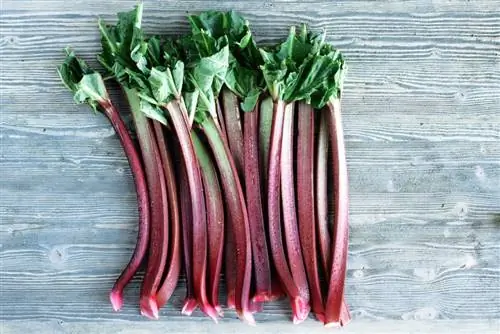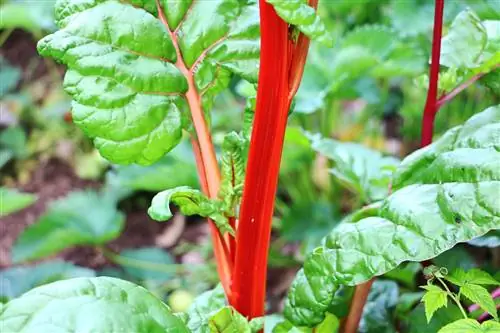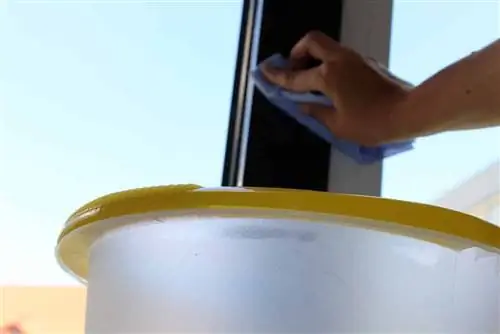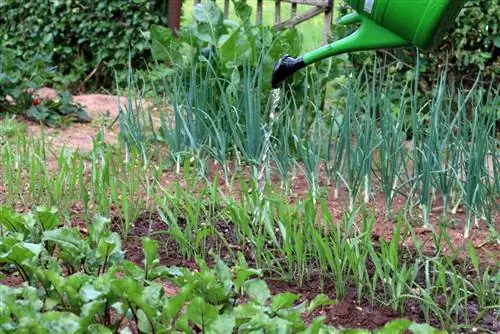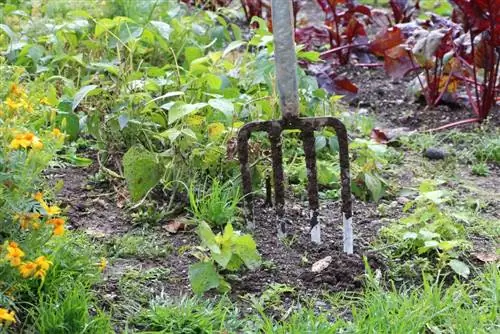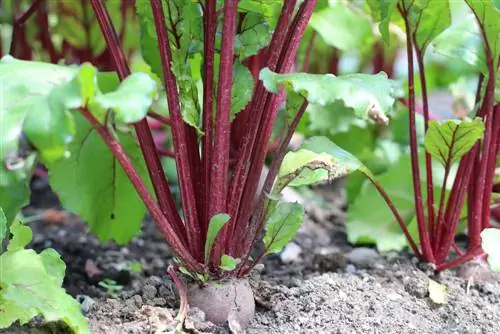- Author admin [email protected].
- Public 2023-12-17 03:39.
- Last modified 2025-01-24 12:45.
Rhubarb is widespread in this country. In spring it is offered fresh in the supermarket or fruit and vegetable shop. If it is grown in the garden, you will always have a few stalks harvested by the end of June. Rhubarb from Germany is a seasonal vegetable because the content of the harmful oxalic acid in rhubarb increases over time over time. Since the highest proportion of acid is under the skin, rhubarb should be peeled. Peeling is very easy and you shouldn't miss out on the delicious sticks because of it.
Botanical classification and origin
Rhubarb (Rheum rhabarbarum) is actually called common rhubarb. In some regions it is also called Krauser or vegetable rhubarb. The common rhubarb belongs to the genus Rhubarb (Rheum) from the knotweed family (Polygonaceae). There are three varieties of rhubarb whose stems are colored differently red:
- Glaskin’s Perpetual
- Timperley Early
- Holstein blood (because of its red stem)
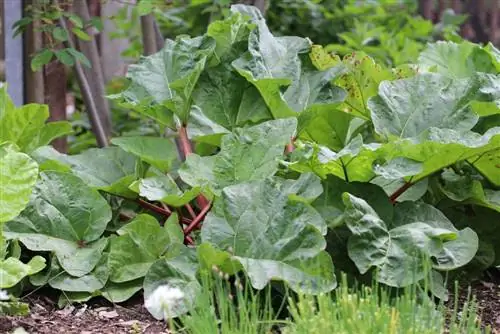
Rhubarb's original homeland is the Himalayas. From Russia he finally came to Europe in the 18th century. In our country, rhubarb is officially a vegetable, but in the USA it is considered a fruit.
Harvest and use
Even though rhubarb is a vegetable, it is mainly used as a fruit in this country. Compotes and cakes are prepared from the stalks of rhubarb because the plant contains harmful oxalic acid, which causes vomiting and circulatory problems if rhubarb is eaten raw. The highest acid content is found in the slightly curled leaves of the plant, which is why they are not used in the kitchen. They are considered inedible. But the acid is also present in the stems. Because acidity in the plant increases throughout the year, fresh rhubarb should only be prepared until the end of June. Popularly, St. John's Day (June 24th) marks the end of the rhubarb harvest.
Tip:
You can freeze cleaned and peeled rhubarb for stock.
Peeling
Before the rhubarb is peeled, it must be washed. Depending on the thickness of the stalks, you can clean the rhubarb with a wet kitchen towel or wash it under running water until all soil residue is removed. Then drain it on a dry kitchen towel or on a tea or terry cloth towel.
Then brown or damaged areas or indentations are carefully cut out with a vegetable knife. After drying, the green leaves or leaf bases are also cut off. To do this, simply cut the stem below the last leaf base. Do the same on the other end of the pole to remove the crop trim. It is usually dried out and discolored. Plus it doesn't taste good.
Tip:
If the first threads come off, you have already done part of the peeling work.
Peeling process
Rhubarb is not actually peeled, only the outermost fibers of the stick are removed. That's why it's also called “rhubarb string pulling”.
- Place a small kitchen knife on one end of the rhubarb.
- Then pull a strip down the entire length of the pole.
- Repeat the process until the stick is peeled all around.
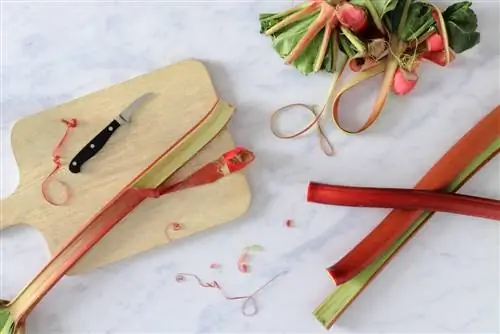
The bar dictates the width and thickness of the individual strips. Always remove as much as can be easily removed from the end of the rhubarb. If the sticks are thick, you can also use a peeler. It doesn't matter whether you pull the threads from top to bottom or from bottom to top. Start at the end where you can remove the individual strips more easily.
Tip:
The strength of the threads depends on the thickness of the rods. On young rods, the individual threads can also be extremely thin.
Once the rhubarb is peeled, it can be used to prepare dishes. If you cook rhubarb until soft, the cooking water must be thrown away. It contains oxalic acid from the rhubarb pieces.
There are different opinions about whether rhubarb needs to be peeled. But there are two good reasons why rhubarb should be peeled:
- Oxalic acid
- Fiberness
Oxalic acid
The oxalic acid content in rhubarb varies depending on the variety. The concentration of acid is higher in green-stemmed varieties than in red-stemmed ones. But the thickness of the stalks is also crucial for the acidity. The following applies: the thicker the bar, the more acid it contains. The highest acidity is directly under the skin, i.e. in the outermost layers of the rhubarb stalks. In this case, peeling the rhubarb reduces the acidity.
Tip:
Young, thin stems inherently contain less oxalic acid. They don't necessarily need to be peeled.
Fiberness
Directly under the rhubarb peel is not only the highest content of oxalic acid, it is also very fibrous. The rhubarb stalks should be peeled so that they don't get stuck in your teeth later.

